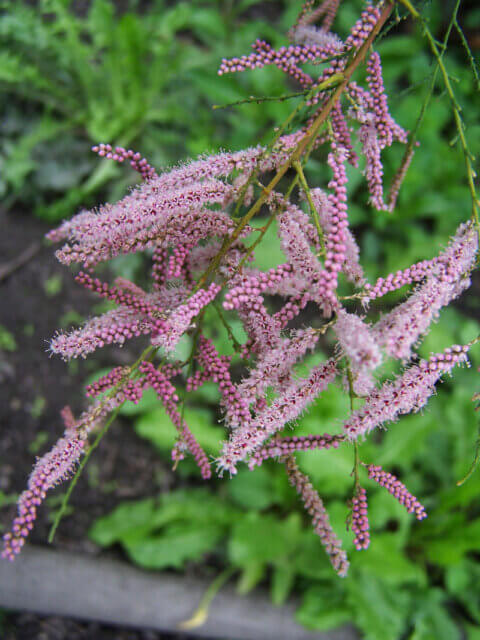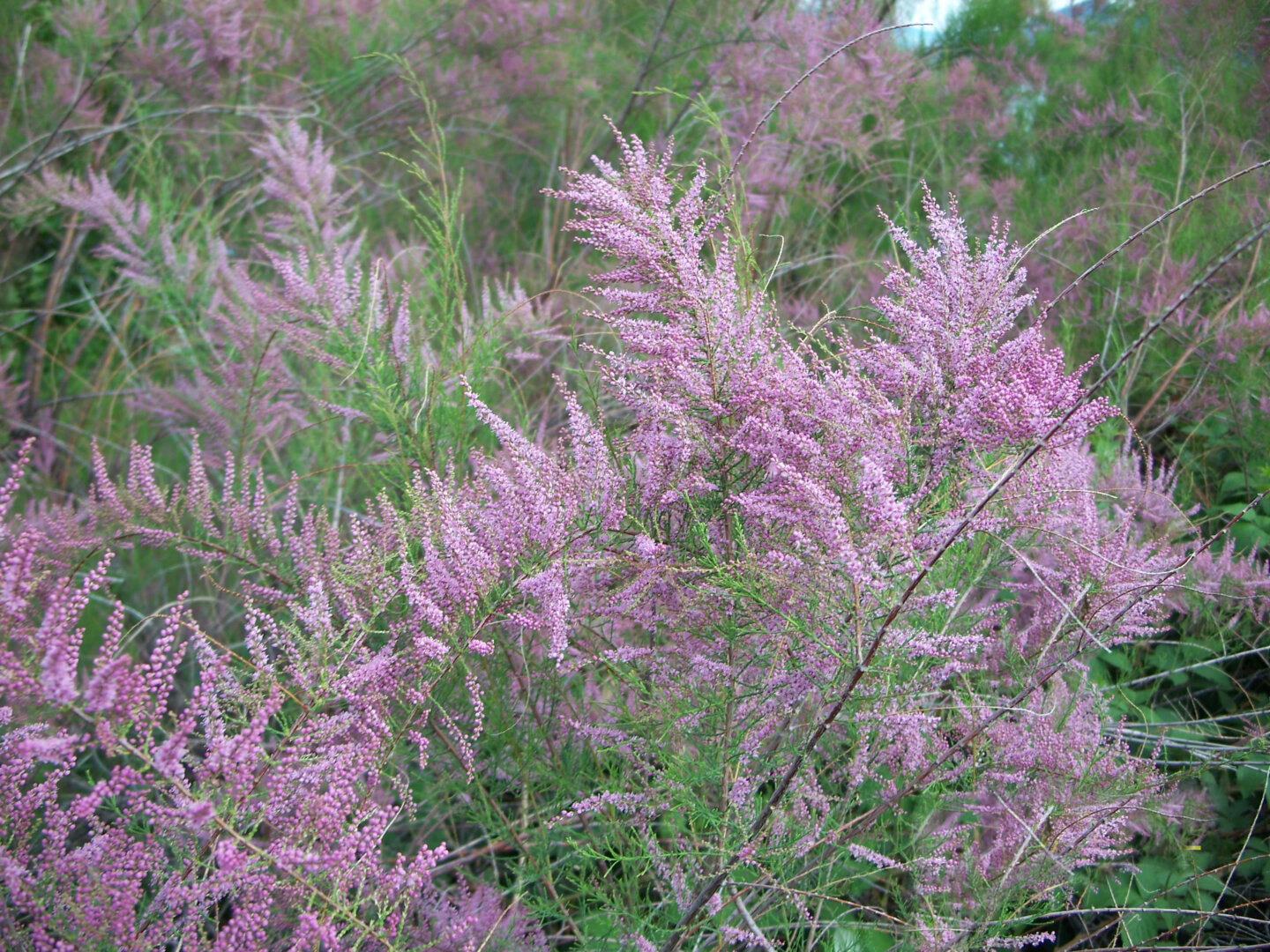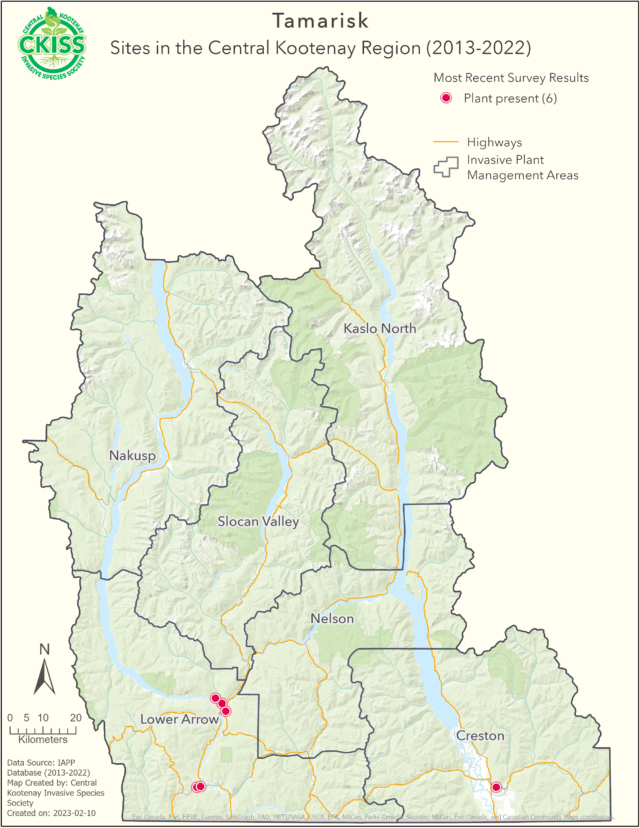Tamarix spp.
Description
- Also known as “Tamarisk”
- Native to Northern Europe and temperate and tropical Asia.
- Deciduous shrub/small tree
- Introduced to the western United States in the 1800s for ornamental use
- Foliage is bright green in summer. Leaves are diamond-shaped and scaly, resembling the leaves of a cedar tree. Leaves turn orange in the fall.
- White-pink flowers grow in long clusters.
- Grows especially well in fine-textured soils but can tolerate other soil conditions.
- Shade intolerant.
- Mainly found in riparian areas.
- Reproduces primarily by seed, but vegetative reproduction through fragmented roots or branches is also possible.
- Produces 600,000 seeds per plant per year.

Consequences of invasion
- Creates deep taproots which can access groundwater and uptake vast amounts of water.
- This plant can interfere with the water cycle and increase the frequency, intensity, and effect of fires and floods.
- Invades streambanks, lakeshores, and wetlands.
- Crowds out native species such as willows and red osier dogwood.
Management options
- Mechanical removal can be difficult since the plant can reproduce from small fragments
- Chemical treatments are rarely suitable for this plant since it grows in riparian areas.
- Select non-invasive alternatives to invasive plants. See the PlantWise guide for informed purchases.
- Avoid accidentally introducing non-native plants to surrounding water bodies by installing water gardens a safe distance away. Ensure water gardens are not allowed to overflow to wetlands, streams or rivers.
- Properly dispose of garden and yard waste by double bagging and disposing of it at your local landfill.
- Prevent plants from spreading from existing populations by washing vehicles, boots, and animals that have been in infested areas.
- Report plants infestations found in remote locations.
Status in the CKISS region
- There is currently insufficient information about salt cedar in the CKISS region to assign it a management category on the CKISS Annual Priority List.
- Insufficient information is available regarding the distribution, impacts, potential for spread, and/or feasibility of control within the CKISS region.
- CKISS plans on carrying out inventory as required, monitoring known locations, and/or finding out more information from other regions.
- To learn more about how CKISS classifies and manages invasive species, see our Invasive Species Priority Lists page.


